November 22, 2024 | 21:55 GMT +7
November 22, 2024 | 21:55 GMT +7
Hotline: 0913.378.918
November 22, 2024 | 21:55 GMT +7
Hotline: 0913.378.918
The Land of a Million Elephants has two famous plateaus. Xiangkhouang Plateau in Northern Laos, home to the beautiful scenic Plain of Jars, and Bolaven Plateau in Champasak Province and Saravanh Province in Southern Laos, the capital of coffee and rubber plantations since the French colonial period.
Through turbulent times, the Lao government together with Xiangkhouang province outlined a strategy to develop Xiangkhouang Plateau in the direction of focusing on livestock, tourism and mineral mining. The potential and advantages are generally great with more than 80,000 ha of flat land that has not been fully exploited. The climate is cool and fresh, and the natural scenery is very beautiful. Especially after 2019, when UNESCO recognized the Plain of Jars as a world cultural heritage, Xiangkhouang’s desire to rise was even more ignited.
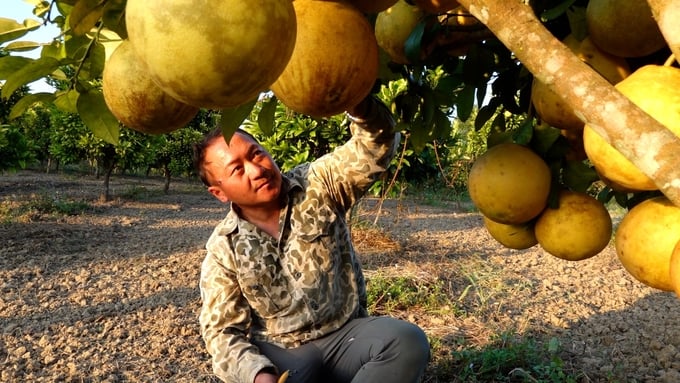
Kao Tho and the largest fruit tree model in Khoune district, Xiangkhouang. Photo: Quang Dung.
The dry season on this plateau usually starts in the last months of the year and lasts until April next year. The dry season comes in fiercely. Plants lack water for irrigation, livestock lack water for drinking, and people's daily activities are met with various difficulties.
We went to the fruit tree farm of Kao Tho's family located on a hill in Khoune district, Xiangkhouang province.
Having studied at Vinh University, Nghe An, Kao Tho has a master's degree in agriculture. On a journey back to his hometown, seeing the vast land and thus the potential to develop fruit trees, since 2016 Kao Tho has boldly set up a project on an area of nearly 500 ha, in which the hill orchard planted with fruit trees is 24 ha wide. As a well-educated and well-trained person, he was determined to reach higher ground. For 7 years he digs the ground, turns the grass, cultivates, and fertilizes. So much sweat and effort poured down, but after so long, the largest fruit tree model in Khoune district has not achieved any significant results.
390 pomelo trees, 380 orange trees also flower and bear fruit, but some fall, and some turn out sour. The same goes for longan, sugar apple and other fruit trees. Kao Tho said, “Although the weather, climate and land in Xiangkhouang are ideal, since the irrigation system has not been invested, there are a lot of difficulties in the dry season. There is no water for irrigation. Seeds, science, technology, and fertilizers are still limited, so the model cannot succeed.”
That is also the main reason why agriculture only accounts for 35% of Xiangkhouang’s GDP. Out of 400 villages in 7 districts, only the central area is relatively developed, the remaining 6 districts are still poor.
We arrived at Xiangkhouang right at the time of harvest. The rice fields of ripe yellow rice laden with grains on the plateau were truly beautiful. Almost the entire area of more than 12,500 ha of sticky rice in Xiangkhouang, people only favor Khao Kai Noi – Laos’ most famous rice specialty.
Khao Kai Noi roughly translates as “small chicken rice”. No one knows where this "small chicken" sticky rice comes from, but it is said that it has been present in Xiangkhouang and Houaphanh provinces for hundreds of years. it is currently a trademark with geographical indications of these two northern provinces, with an area of more than 20,000 ha. Of course, compared to Sainyabuli, the rice capital of the Land of a Million Elephants, or provinces under the southern plains of Laos, these are not large farming areas. But in the life and customs of the people, this "small chicken" sticky rice variety is always number one.
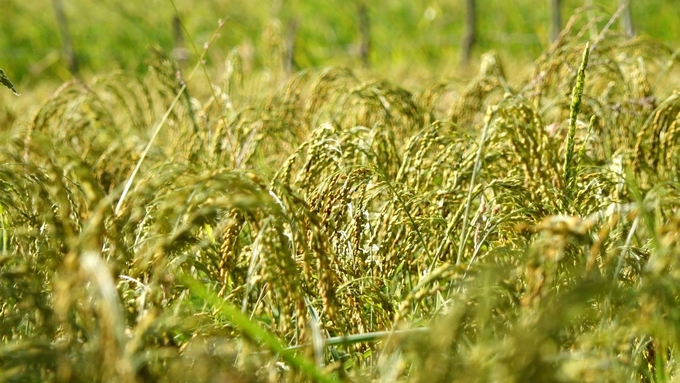
“On traditional days or important events of the local or family, the first thing to cook is always sticky rice. Nothing beats having Kai Noi rice to make cakes and sticky rice to offer to the ancestors and Buddha,” said Somphon Phengvilay, chief of Hoi village, Khuone district. Photo
A kilogram of "small chicken" sticky rice sold in-field is around 12-15 thousand Laotian Kip, equivalent to VND 40,000 - 60,000. Every year, the people of Hoi village plant approximately 48 ha. Although the order quantity is a lot, they have never been able to meet the demand. The reason, as the Chief of Hoi village Somphon Phengvilay said, was that people still only did one crop. In the dry season, they could not plant or raise anything.
“Vietnamese projects are currently supporting Xiangkhouang in terms of irrigation at three locations in Sen Lat, Nam Pong and Nam The. There will be approximately 12 more big projects in the near future. According to our calculation, after these projects succeed, approximately 37,000 ha of agroproduction area in Xiangkhouang will be proactive in terms of irrigation water in the dry season. Of course, the issue is not fully resolved, but surely thanks to that, Xiangkhouang agriculture will have a strong breakthrough", said Sonsarone Phalichanh, Deputy Director of Xiangkhouang Department of Agriculture and Forestry.
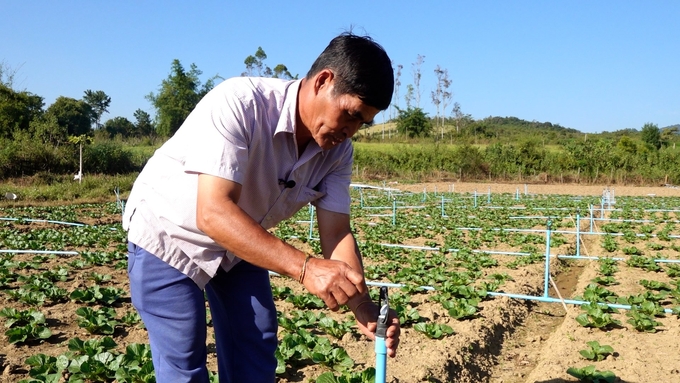
"My wish in the near future will be to further cooperate with Vietnamese businesses to produce rice on a larger scale,” Southat Keoduangsy said.
Leaving Xiangkhouang plateau, we continued our journey to Luang Prabang, Vientiane, the ancient capital and capital of the beautiful country of Laos. We kept moving, and we saw things. Although there have been many changes, Laos' agriculture still has many bottlenecks and limitations. Small production scale, lack of application of science and technology, limited irrigation infrastructure are barriers that make Laos' agricultural development incommensurate with its advantages and potential.
Picking us up and taking us to see agricultural models in Vientiane Capital were Ms. Luong Thi Thuy Dung, a daughter of Quan ho Bac Ninh, and her husband Phonephet Phongsacmuong. They took us to the Southat Rice factory owned by Southat Keoduangsy - the largest rice factory in Vientiane.
Southat Rice factory was built on an area of 2 ha with an investment of roughly USD 2 million. The factory can mill 3.5 tons of rice per day, selling 7,000 to 8,000 tons to the market per year. Southat boasted about the fact that his company often links with rice producers and consumers in Vietnam. “There are many things in the agricultural field that we Laotian need support from our Vietnamese comrades. My wish in the near future will be to further cooperate with Vietnamese businesses to produce rice on a larger scale,” Southat Keoduangsy said in earnest.
Translated by Samuel Pham
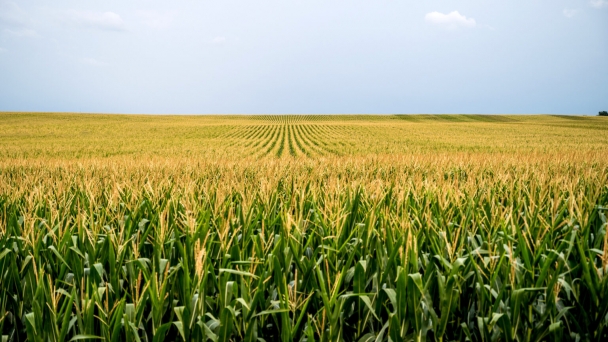
(VAN) Approach seeks voluntary reduction in fertilizer use, leading to cost savings and cleaner groundwater.
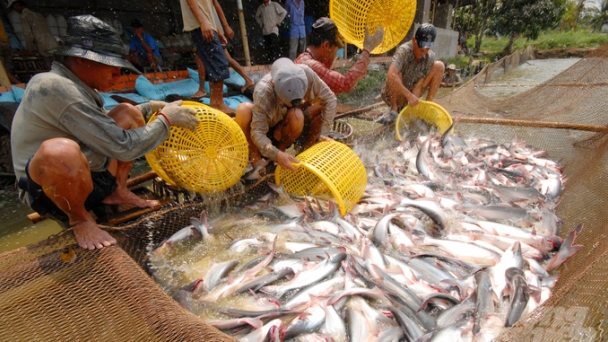
(VAN) Thanks to the pangasius farming link, cooperative members overcame the price crisis and reduced costs by VND 1,500-2,000/kg of fish over farmers.
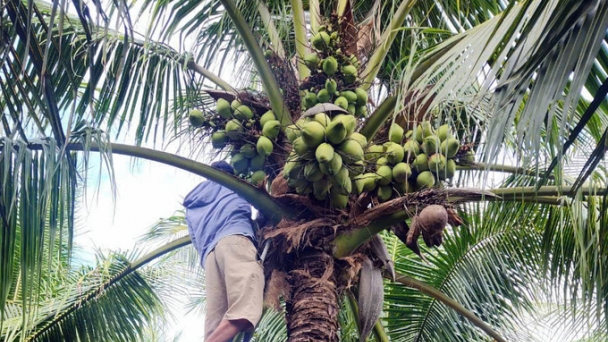
(VAN) Phu Yen Province will establish concentrated coconut production areas in Song Cau Town and Tuy An District, combining landscape development with community-based tourism.
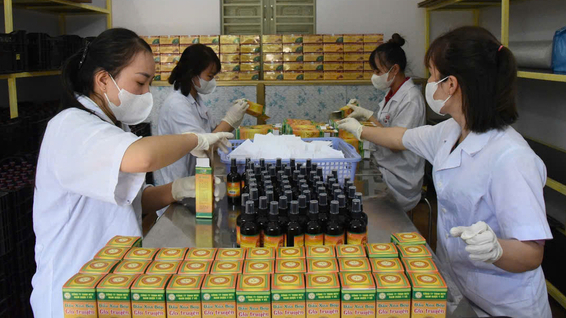
(VAN) With a modern technological production line, Nguyen Van Manh can efficiently extract medicinal herbs while preserving their valuable active compounds.
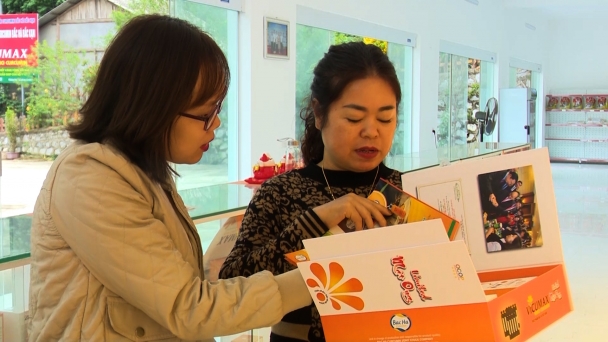
(VAN) Vicumax Limited Nano Curcumin, Vicumax Nano Curcumin, and Vicumax Honey Nano Curcumin are the three 5-star OCOP products from Bac Kan province in 2024.
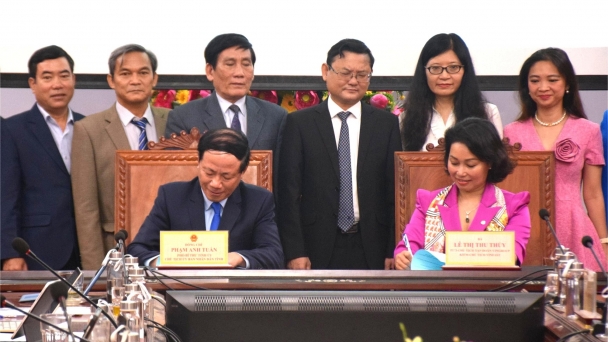
(VAN) Binh Dinh is actively implementing a comprehensive green transformation strategy to achieve net-zero emissions, in line with the Prime Minister’s directive.
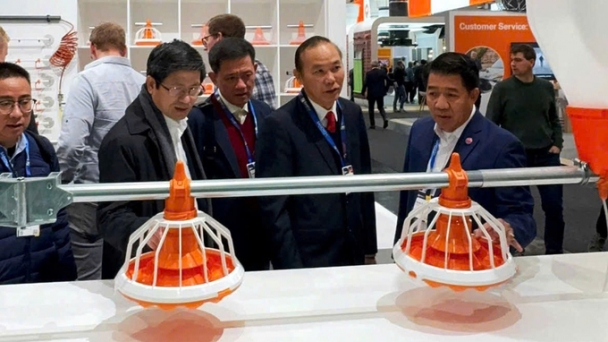
(VAN) In southern Vietnam, the Big Dutchman Group and the Hung Nhon Group will collaborate on 12 livestock farming projects, with a focus on poultry, laying chickens, and pigs.